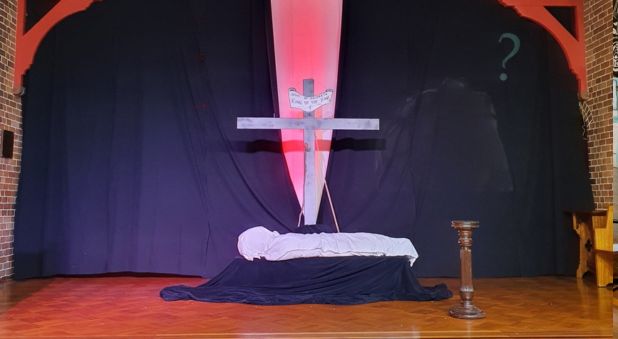When Epping rector Bishop Ross Nicholson first raised the idea of a Good Friday passion play centred on a large puppet of Jesus, the response was sceptical. Could this really work?
Given that his previous church in Tasmania had done the play for years, he was able to reply with an enthusiastic “Yes!”
“Every time we’ve done it, from Launceston to Epping, people come away from it gobsmacked,” he says. “They are visibly moved by the whole program.”
The genesis of the play came about in 2013 when Bishop Nicholson was at St John’s, Launceston, and there was the desire for a different, creative way to celebrate Good Friday. He took all four gospels and wrote a continuous biblical narrative from the Last Supper to the crucifixion and burial – breaking it up into separate scenes such as communion and Jesus’ washing of his disciples’ feet; and added an introduction that includes Creation and the Fall.
He then created a life-sized puppet of Jesus, operated by three puppeteers: one taking charge of the head and eyes, and the other two operating one hand apiece.
I’ve had people say to me, ‘I was crying during the crucifixion’
“I’ve always been interested in puppetry and how a puppet can relate adult concepts in a disarming way,” he says. “I think puppets are like a piece of visual art and, because they’re not lifelike, they stimulate your imagination. It's such a dramatic story, but I didn’t want to do it with real actors because it’s always done that way – and also, if you’re up there and you’re being Jesus at the Last Supper, it’s so hard to get the importance of it and all the emotions across.”
Simple props are used to illustrate the story such as a tree and snake in the Garden of Eden, bread and wine, a crown of thorns and a cross, and action onstage is interspersed with choral singing, congregational hymns, a solo performance of “Were You There (when they crucified my Lord)” and communion for the whole congregation.
The event is simply, and appropriately, named Friday.
“I’ve had people say to me, ‘I was crying during the crucifixion’,” Bishop Nicholson recalls.
“In the crucifixion, the puppet’s eyes are able to be closed... when Jesus breathes his last, the puppeteer closes the eyes and that really has an impact upon people.
“What also takes place when he breathes his last is that the puppeteers let him slump down and the back curtain behind the cross rips open, and a red screen appears behind the dead Jesus.
“People really enter into the emotion of it. We use the NIV text of the gospels, so it’s true to the story, but there’s something about art that connects to us. The word and the art are a powerful combination.”














